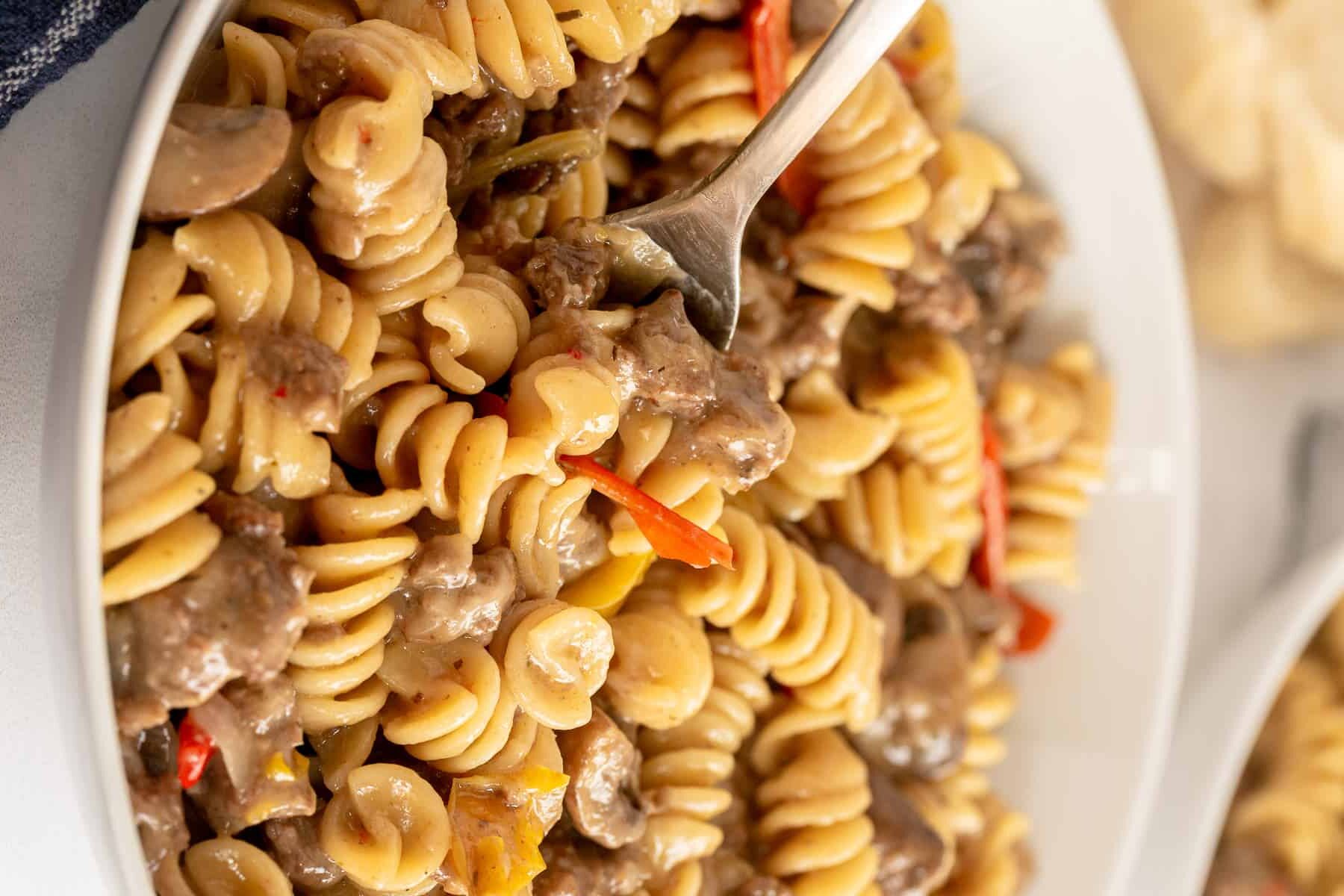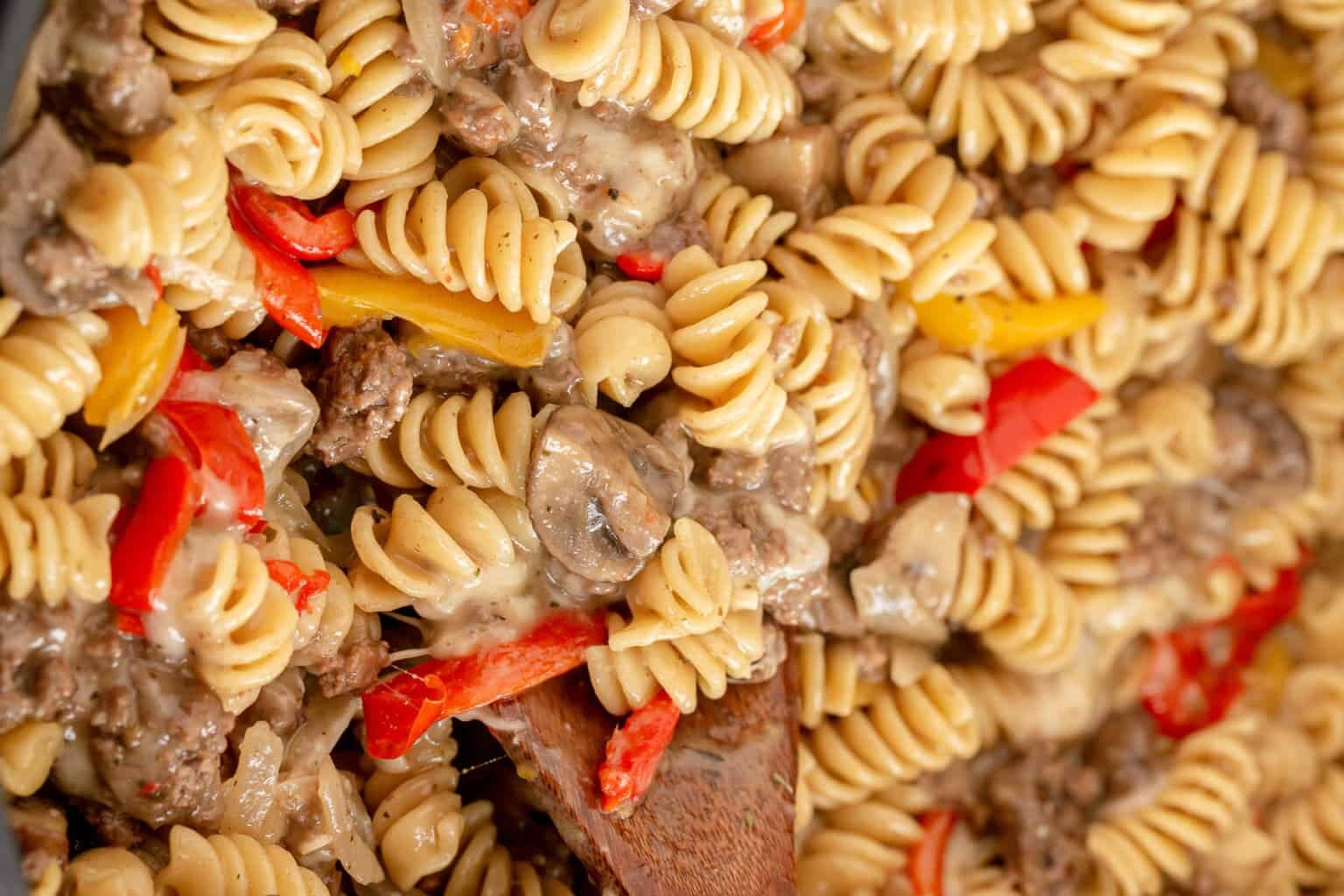- ENTERTAINMENT
25 Classic Kids’ Shows That Raised Me (and Still Live Rent-Free in My Head)


The fusion of the iconic Philly cheesesteak and comforting pasta creates a culinary delight that has quickly gained popularity among home cooks and food enthusiasts. Philly cheesesteak pasta combines the savory flavors of thinly sliced steak, melted cheese, and sautéed vegetables with the satisfying texture of pasta. This dish offers a unique twist on traditional pasta recipes, providing a hearty and flavorful meal that is both easy to prepare and sure to impress. Whether you’re a seasoned cook or a kitchen novice, this dish offers a delightful experience packed with rich flavors and textures.
Philly cheesesteak pasta captures the essence of the classic sandwich through its rich and savory flavor profile. The combination of tender beef, creamy cheese, and sautéed vegetables creates a harmonious blend that is both comforting and indulgent. The pasta acts as a perfect canvas, absorbing the flavors of the sauce and providing a satisfying bite. The dish typically includes a mix of provolone or American cheese, which melts beautifully to create a creamy sauce that coats each strand of pasta. The addition of bell peppers and onions adds a subtle sweetness and crunch, enhancing the overall taste and texture of the dish.
Creating a classic Philly cheesesteak pasta requires a selection of key ingredients that contribute to its distinctive flavor. The primary components include:

For those seeking convenience without sacrificing flavor, a one-pot Philly cheesesteak pasta is the perfect solution. This method simplifies the cooking process and minimizes cleanup, making it ideal for busy weeknights. Here is a step-by-step guide to creating this dish:
While the classic Philly cheesesteak pasta is delicious on its own, regional variations offer exciting twists that cater to diverse palates. In the Northeast, some cooks incorporate mushrooms for an earthy flavor, while others in the South may add jalapeños for a spicy kick. Substituting chicken for beef creates a lighter version, appealing to those who prefer poultry. Each variation retains the core elements of the dish while introducing unique flavors and textures that reflect local tastes and preferences.
The choice between ground beef and thinly sliced steak significantly impacts the texture and flavor of Philly cheesesteak pasta. Thinly sliced steak, such as ribeye, offers a traditional experience with its tender, juicy texture. However, ground beef provides a quicker, more economical option that still delivers robust flavor. Both proteins absorb the rich, cheesy sauce well, so the decision ultimately depends on personal preference and convenience.
Bell peppers are a staple in Philly cheesesteak pasta, contributing sweetness and a slight crunch. Green, red, and yellow bell peppers each offer distinct flavors, allowing you to customize the dish to your liking. Beyond bell peppers, mushrooms, spinach, and broccoli can be added for extra nutrition and variety. These vegetables complement the savory notes of the beef and cheese, creating a balanced and flavorful dish.
Cream cheese is a secret weapon in achieving the creamy texture that makes Philly cheesesteak pasta so irresistible. When added to the pot, it melts into the sauce, enhancing its richness and providing a smooth, velvety finish. This ingredient is particularly useful when using leaner cuts of beef, as it adds moisture and depth to the dish. For those seeking a lighter option, reduced-fat cream cheese can be used without compromising on creaminess.
Provolone cheese is a cornerstone of Philly cheesesteak pasta, known for its sharp, tangy flavor and excellent melting properties. It elevates the dish by adding complexity and depth, balancing the richness of the beef and creaminess of the sauce. For an added layer of flavor, consider using smoked provolone or mixing in other cheeses like mozzarella or cheddar. This blend creates a multi-dimensional taste that enhances the overall dining experience.
For those short on time, a 5-minute Philly cheesesteak pasta offers a quick yet satisfying meal. By using pre-cooked beef or leftover steak and pre-packaged pasta, you can whip up this dish in no time. Simply heat the beef and vegetables in a skillet, add cooked pasta, and stir in cheese until melted. This method provides all the flavors of the traditional dish with minimal effort, making it perfect for busy days.
Leftover Philly cheesesteak pasta can be stored in an airtight container in the refrigerator for up to three days. To reheat, simply place it in a skillet over medium heat, adding a splash of water or broth to loosen the sauce. For longer storage, consider freezing the pasta in individual portions. When ready to eat, thaw in the refrigerator overnight and reheat as directed. This method ensures you always have a delicious meal on hand.
While Philly cheesesteak pasta is relatively straightforward, there are common mistakes that can affect the final result. Overcooking the pasta can lead to a mushy texture, so it’s crucial to cook it until just al dente. Another pitfall is using insufficient cheese, which can result in a lackluster sauce. To fix this, gradually add more cheese until the desired creaminess is achieved. Lastly, under-seasoning the dish can make it bland, so be sure to taste and adjust the seasoning as needed throughout the cooking process.
Philly cheesesteak pasta is a hearty dish that pairs well with a variety of sides. A simple green salad with a tangy vinaigrette offers a refreshing contrast to the richness of the pasta. Garlic bread or a crusty baguette is perfect for soaking up the delicious sauce. For a complete meal, consider serving the pasta with roasted vegetables or a light soup. These pairings enhance the overall dining experience, making the meal both satisfying and memorable.